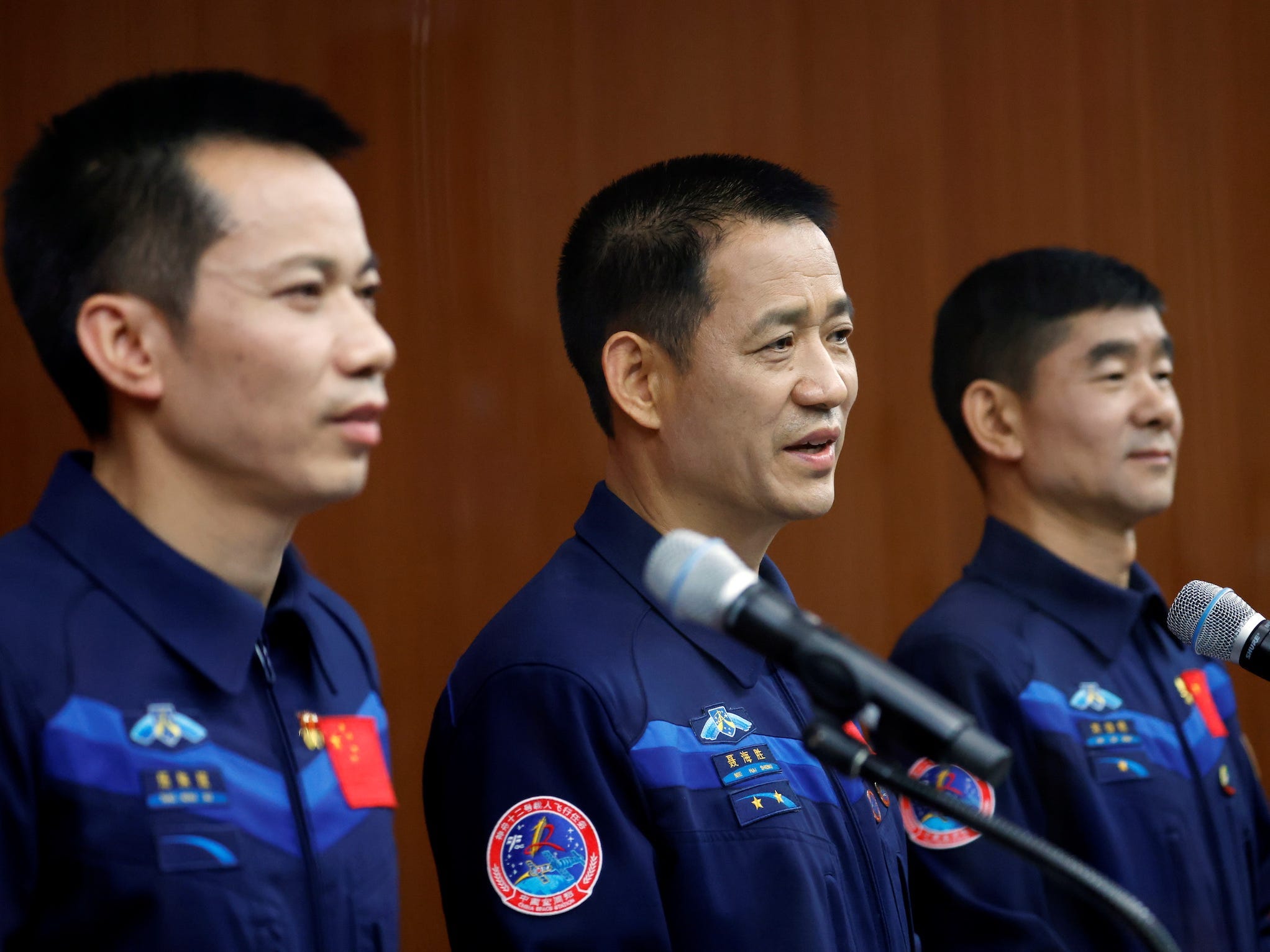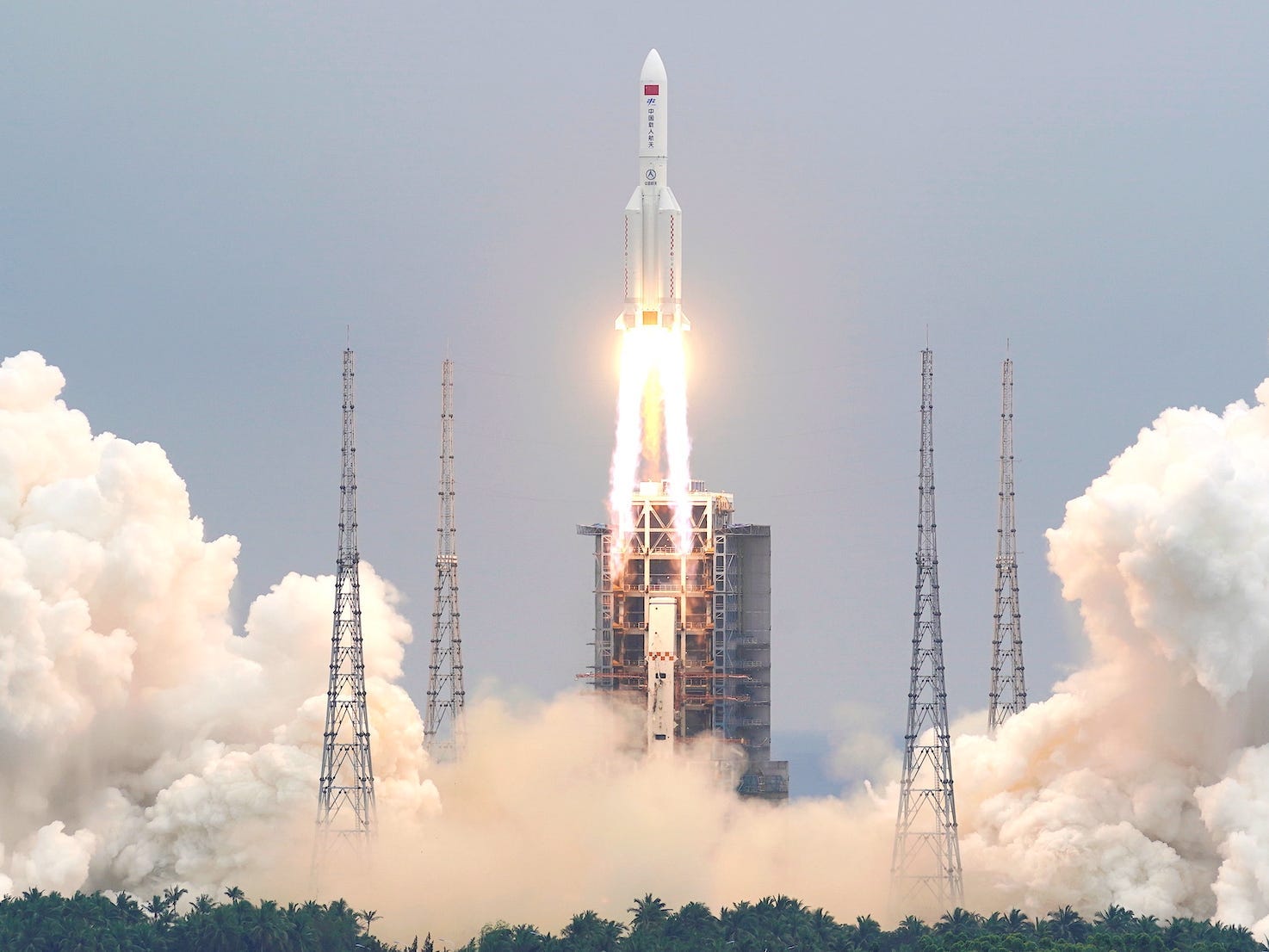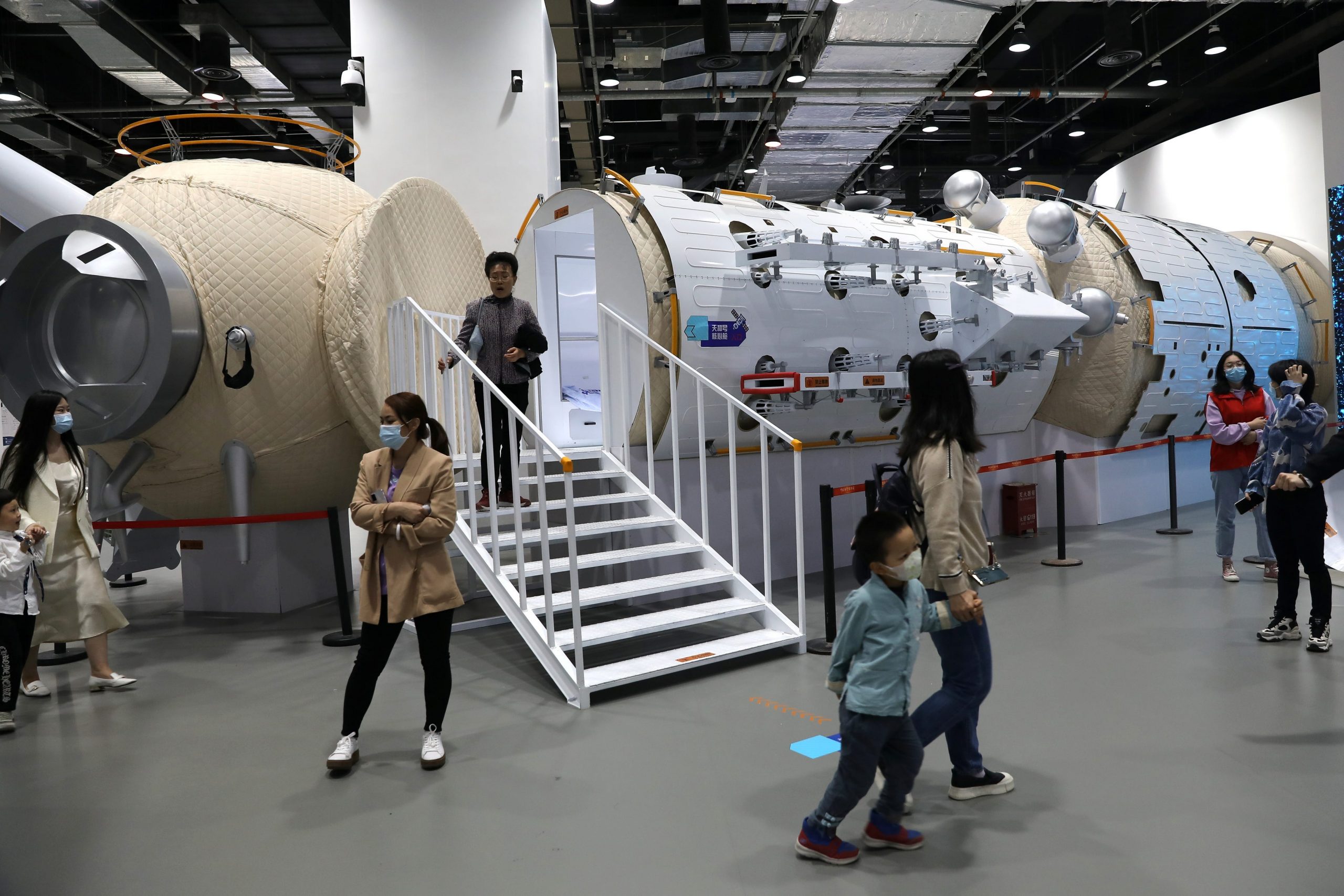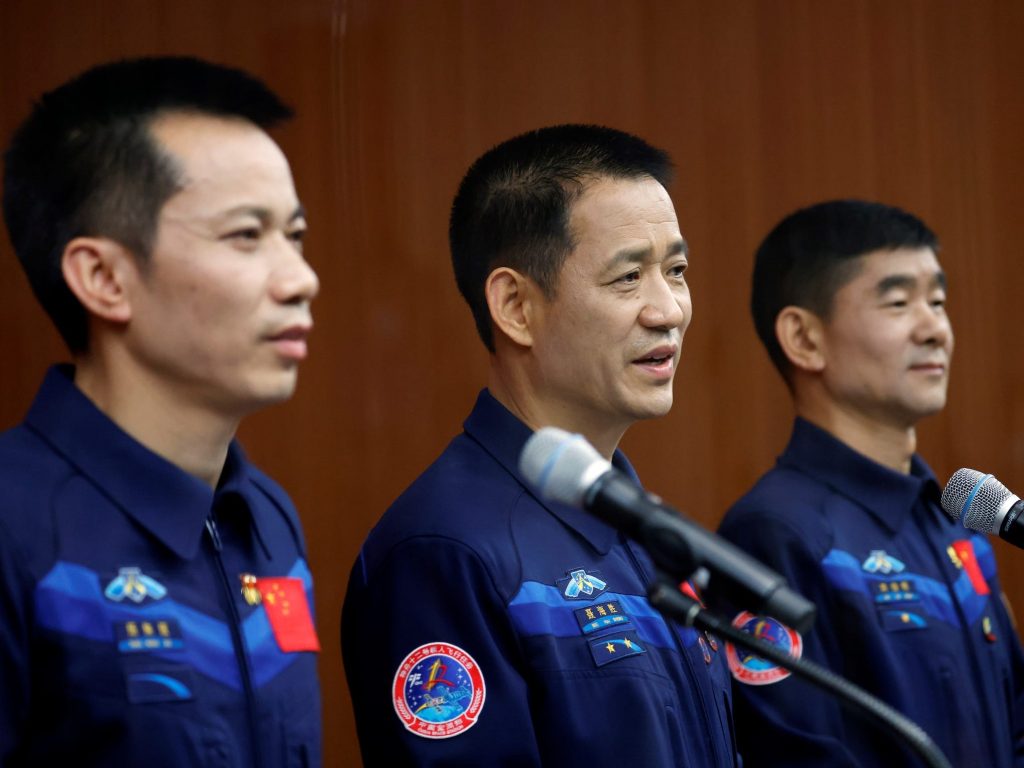
Carlos Garcia Rawlins/Reuters
- China plans to launch three taikonauts to its new space-station module on Wednesday night.
- The Chinese astronauts are set to spend three months aboard the Earth-orbiting Tianhe module.
- It's the third of 11 planned launches to build China's space station, set for completion in 2022.
- See more stories on Insider's business page.
China started launching parts of its new space station into orbit just two months ago, and it's already sending people there.
The nation plans to launch three astronauts – taikonauts, as China calls them – into Earth's orbit at 9:22 p.m. ET on Wednesday, according to state-owned broadcaster CGTN.
Nie Haisheng, Liu Boming, and Tang Hongbo will be the first people to fly to China's new space station. Their mission, called Shenzhou-12, will take them to the Tianhe module – the station's first piece, which launched into space in April.
Haisheng, Boming, and Hongbo are expected to live inside the 54-foot-long Tianhe module for about three months, according to CGTN. The module houses the future station's living quarters.
"I am convinced that with the best wishes of my counterparts in China, and the general preparation, and the rounds of training on us, we are capable of accomplishing this task," Haisheng said during a press conference on Wednesday, which was translated into English on CGTN.
State-controlled broadcaster CCTV may air Wednesday's taikonaut launch live with commentary in Mandarin. CGTN could also broadcast the launch in English on its Youtube channel.
The last time China flew humans to space was in 2016, when it launched three taikonauts to a temporary space-station prototype, called Tiangong-2. They stayed there for a month. In 2019, the test station fell back towards Earth and burned up in the atmosphere, as planned.
9 more launches to build a new space station

China Daily via Reuters
Tianhe is the core module of the new Chinese Space Station (CSS). The completed orbiting laboratory is set to weigh 66 tons and accommodate three astronauts at a time. That's significantly smaller than the International Space Station (ISS), which weighs about 450 tons and is roughly the length of a football field. However, the ISS is aging and may be out of commission by the 2030s.
Ultimately, China plans to send taikonauts to the CSS for six-month stints, much like missions to the ISS. China expects to accept other countries' astronauts on the CSS as well. Dmitry Rogozin, director of Roscosmos, told reporters on Wednesday that Russia plans to send its own cosmonauts there.
For now, these first three taikonauts are set to test out the Tianhe module's life-support capabilities - its oxygen generation, its ability to filter out the carbon dioxide they exhale, its protections against the radiation of space, and the way it circulates fluids. They will also test communications between the space station and mission controllers on the ground.
The taikonauts are even expected to conduct a few hours-long spacewalks to test China's newest spacesuits.

Tingshu Wang/Reuters
If all of that goes well, China plans to launch eight more missions to complete the CSS by the end of 2022. That includes launching two more modules, three more cargo shipments, and three more astronaut crews. The nation has already launched one module and one cargo shipment. All in all, that totals to 11 planned launches.
However, after the Tianhe module launched, the body of the Long March 5b rocket that carried it fell into an uncontrolled orbit around Earth. Usually, rocket bodies are programmed to fall into the ocean, but the Long March 5b booster could have landed anywhere across a vast swath of the planet - including much of the inhabited world.
Fortunately, the rocket body still landed in the ocean. But the incident sparked international outcry and criticism from rocket experts. It's unclear whether China will alter its rocket design for the next two module launches. The astronaut and cargo missions, however, will use different rockets that China has previously launched without incident.

